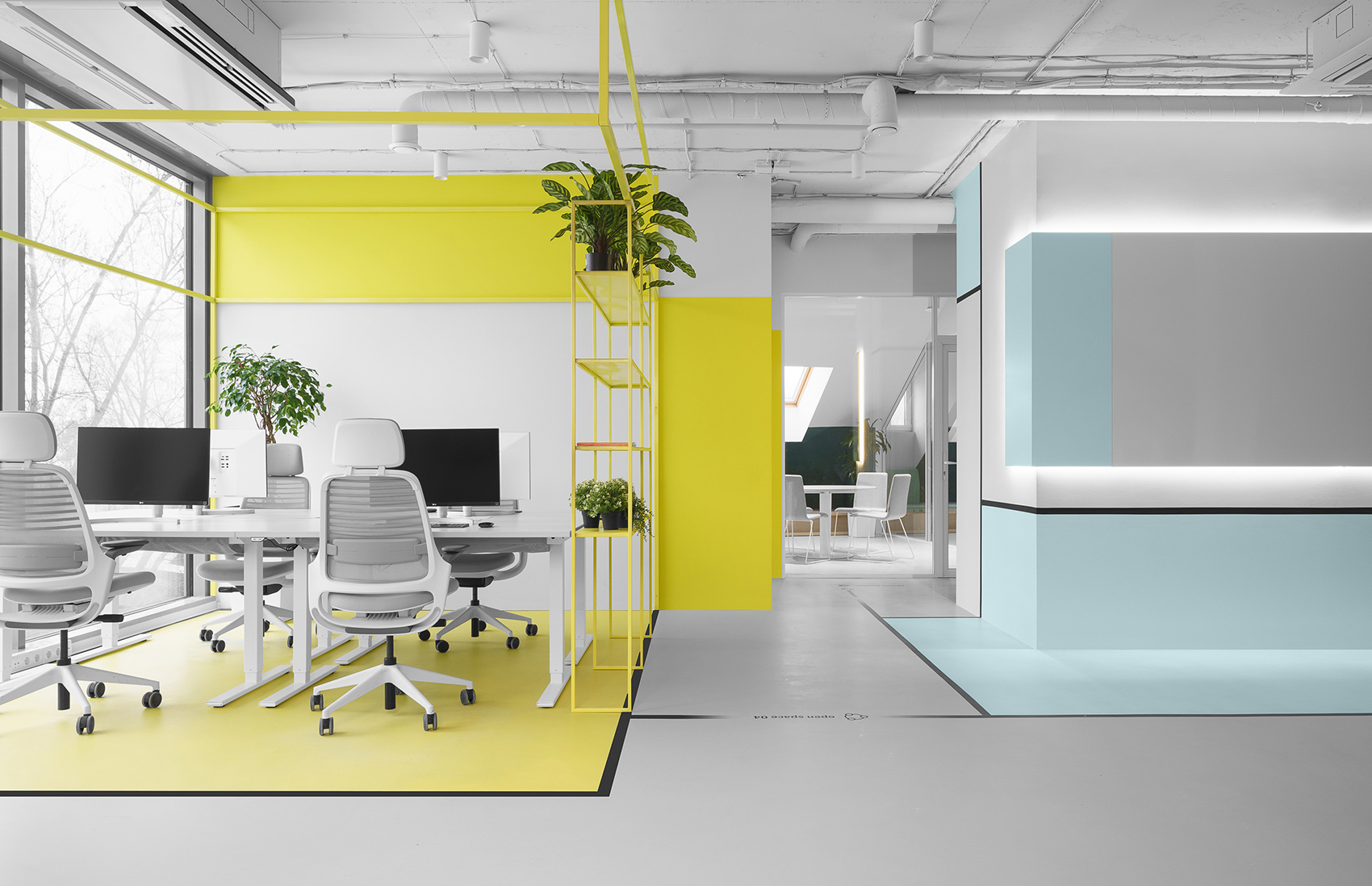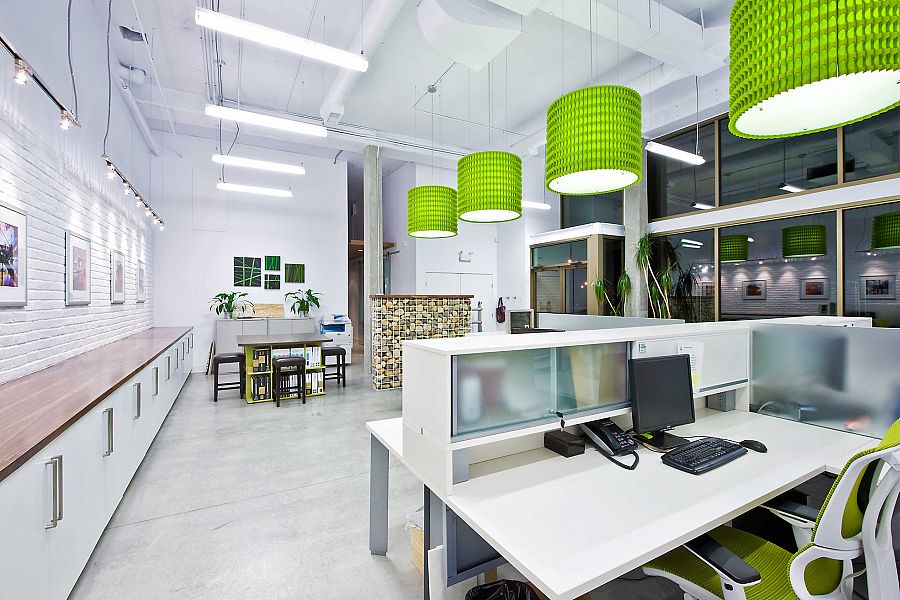What Are the Latest Trends in Office Interior Designing?
Discover modern office design trends: flexible spaces, sustainability, biophilic elements, and smart tech. Boost productivity with innovative concepts.

In today’s rapidly evolving business landscape, office interior design plays a crucial role in shaping the way we work. From fostering creativity and collaboration to enhancing productivity and well-being, the design of office spaces has a significant impact on employees and their overall experience. Let’s delve into some of the latest trends that are redefining office interior design.
Trends in Office Interior Design
Shift Towards Flexible Workspaces
One of the most prominent trends in office interior design is the shift towards flexible workspaces. Companies are increasingly embracing the concept of agile and adaptable environments that can easily accommodate changing needs and preferences. This trend reflects the growing emphasis on agility and collaboration in modern workplaces.
Biophilic Design Elements

Biophilic design, which seeks to incorporate elements of nature into the built environment, is gaining traction in office interior design. From living walls and indoor plants to natural light and organic materials, biophilic elements help create a more inviting and rejuvenating workspace. Research suggests that exposure to nature can have numerous benefits for employees, including reduced stress levels and increased productivity.
Emphasis on Employee Well-being
Another significant trend in office interior design is the emphasis on employee well-being. Companies are recognizing the importance of creating healthy and supportive work environments that promote physical, mental, and emotional wellness. This includes features such as ergonomic furniture, designated wellness areas, and access to natural light and green spaces.
Integration of Technology
Technology plays a central role in modern office design, facilitating communication, collaboration, and productivity. From wireless charging stations and smart lighting systems to interactive whiteboards and virtual meeting rooms, the integration of technology enhances the functionality and efficiency of office spaces. Companies are also exploring innovative ways to incorporate AI and automation into office design to streamline processes and improve the overall user experience.
Sustainable Design Practices

Sustainability is a growing priority in office interior design, with companies seeking to reduce their environmental impact and promote responsible practices. This includes using eco-friendly materials, implementing energy-efficient systems, and incorporating renewable energy sources. Sustainable design not only benefits the environment but also contributes to a healthier and more resilient workplace.
Inclusive and Diverse Spaces
Diversity and inclusion are increasingly being reflected in office design, with companies striving to create environments that are welcoming and accessible to people of all backgrounds and abilities. This includes features such as gender-neutral restrooms, accessible workstations, and inclusive signage. By embracing diversity, companies can foster a more inclusive and supportive workplace culture.
Minimalist and Functional Aesthetics

Minimalism continues to be a dominant aesthetic trends in office interior design, with an emphasis on clean lines, simple forms, and uncluttered spaces. Minimalist design not only creates a sleek and modern look but also promotes productivity and focus by reducing distractions. Functional aesthetics, which prioritize practicality and usability, are also gaining popularity, with companies opting for versatile furniture and multifunctional spaces.
Personalization and Customization

Personalization is becoming increasingly important in office design, with companies recognizing the value of creating spaces that reflect their unique brand identity and culture. Customizable elements such as modular furniture, adjustable lighting, and configurable layouts allow employees to tailor their workspaces to suit their individual preferences and work styles. This level of personalization enhances employee satisfaction and engagement while fostering a sense of ownership and belonging.
Hybrid Work Environments
The rise of remote and hybrid work models has prompted companies to rethink the design of their office spaces. Flexible seating arrangements, collaborative zones, and technology-enabled meeting rooms are becoming essential features of modern workplaces, accommodating both in-person and virtual collaboration. Hybrid work environments prioritize flexibility and connectivity, enabling employees to work seamlessly across different locations and time zones.
Artificial Intelligence and Smart Offices
Artificial intelligence (AI) and smart technologies are revolutionizing office design, offering innovative solutions for enhancing efficiency, productivity, and comfort. AI-powered systems can analyze data on space utilization, environmental conditions, and employee preferences to optimize office layouts, automate routine tasks, and personalize experiences. Smart offices are equipped with connected devices and sensors that monitor and control various aspects of the workspace, from temperature and lighting to security and access control.
Multi-functional Furniture and Spaces
Multi-functional furniture and spaces are becoming increasingly popular in office design, allowing companies to maximize the use of limited space and adapt to changing needs. Modular furniture, collapsible partitions, and convertible workstations enable offices to easily reconfigure layouts for different activities and events. Multi-functional spaces, such as breakout areas and multipurpose rooms, serve multiple purposes throughout the day, accommodating meetings, presentations, brainstorming sessions, and relaxation.
Read more : The Importance of Air Conditioning for Offices in 2024
Virtual Reality and Augmented Reality
Virtual reality (VR) and augmented reality (AR) technologies are revolutionizing the way office spaces are designed and visualized. Designers and architects can use VR and AR tools to create immersive 3D simulations of proposed designs, allowing clients to experience and interact with spaces before they are built. This enables more accurate decision-making, reduces the need for costly revisions, and enhances communication between stakeholders.
Collaborative Spaces and Zones
Collaboration is a cornerstone of modern work culture, and office design plays a crucial role in facilitating teamwork and innovation. Collaborative spaces and zones, such as open-plan work areas, breakout rooms, and brainstorming pods, provide employees with dedicated areas for collaboration, brainstorming, and creative exchange. These spaces are designed to promote spontaneous interactions, encourage cross-functional collaboration, and foster a sense of community and camaraderie.
Conclusion
The field of office interior design is always changing to meet the needs of workers today. The latest trends focus on creating spaces that help employees feel good, work together, and be productive. These trends include using flexible work areas, adding elements from nature, using sustainable practices, and incorporating smart technology. By keeping up with these trends and using creative design ideas, companies can make workspaces that inspire creativity, engage employees, and lead to success.
FAQs
How can I incorporate biophilic design into my office space?
Biophilic design can be incorporated into office spaces through the use of natural materials, indoor plants, natural light, and views of nature. Consider incorporating elements such as living walls, green roofs, and water features to create a connection to the natural environment.
What are some cost-effective ways to update my office interior design?
Some cost-effective ways to update your office interior design include repainting walls, rearranging furniture, adding plants and artwork, upgrading lighting fixtures, and investing in ergonomic furniture. These simple changes can refresh the look and feel of your office space without breaking the bank.
How can I create a more collaborative work environment in my office?
To create a more collaborative work environment, consider incorporating collaborative spaces and zones such as open-plan work areas, breakout rooms, and brainstorming pods. These spaces should be designed to facilitate spontaneous interactions, encourage teamwork, and foster creativity.
What role does office interior design play in employee retention and recruitment?
Office interior design plays a significant role in employee retention and recruitment by influencing employee satisfaction, engagement, and productivity. A well-designed office space that reflects company culture and values can attract top talent and improve employee morale, leading to higher retention rates.
How can I ensure that my office interior design is inclusive and accessible to all employees?
To ensure that your office interior design is inclusive and accessible to all employees, consider incorporating features. Consult with employees with disabilities to identify specific needs and preferences and make accommodations accordingly.
Read more : Office Essentials: Director Tables for Productivity




